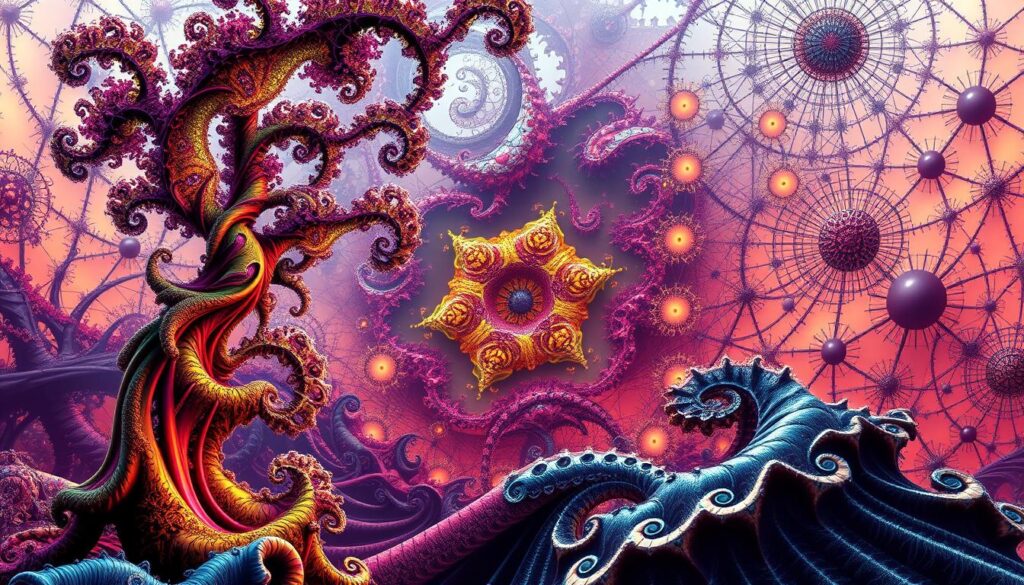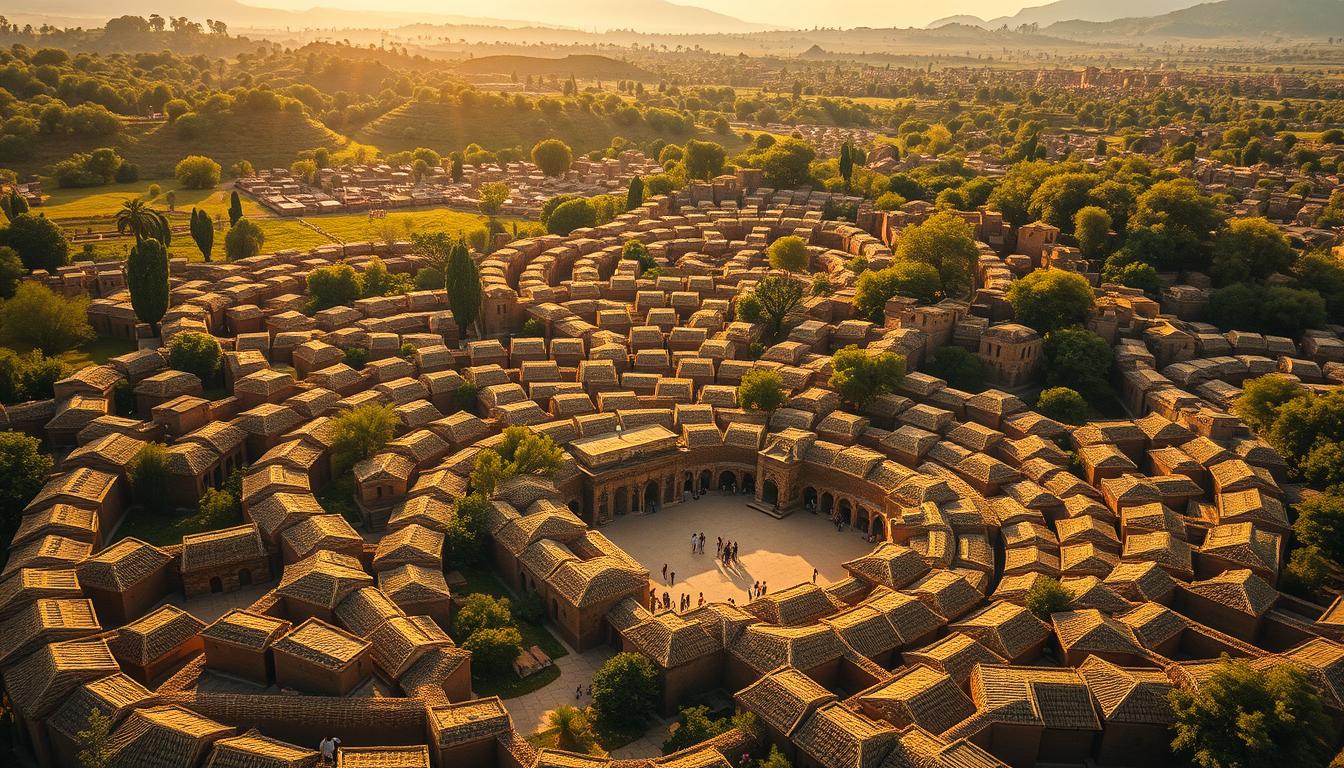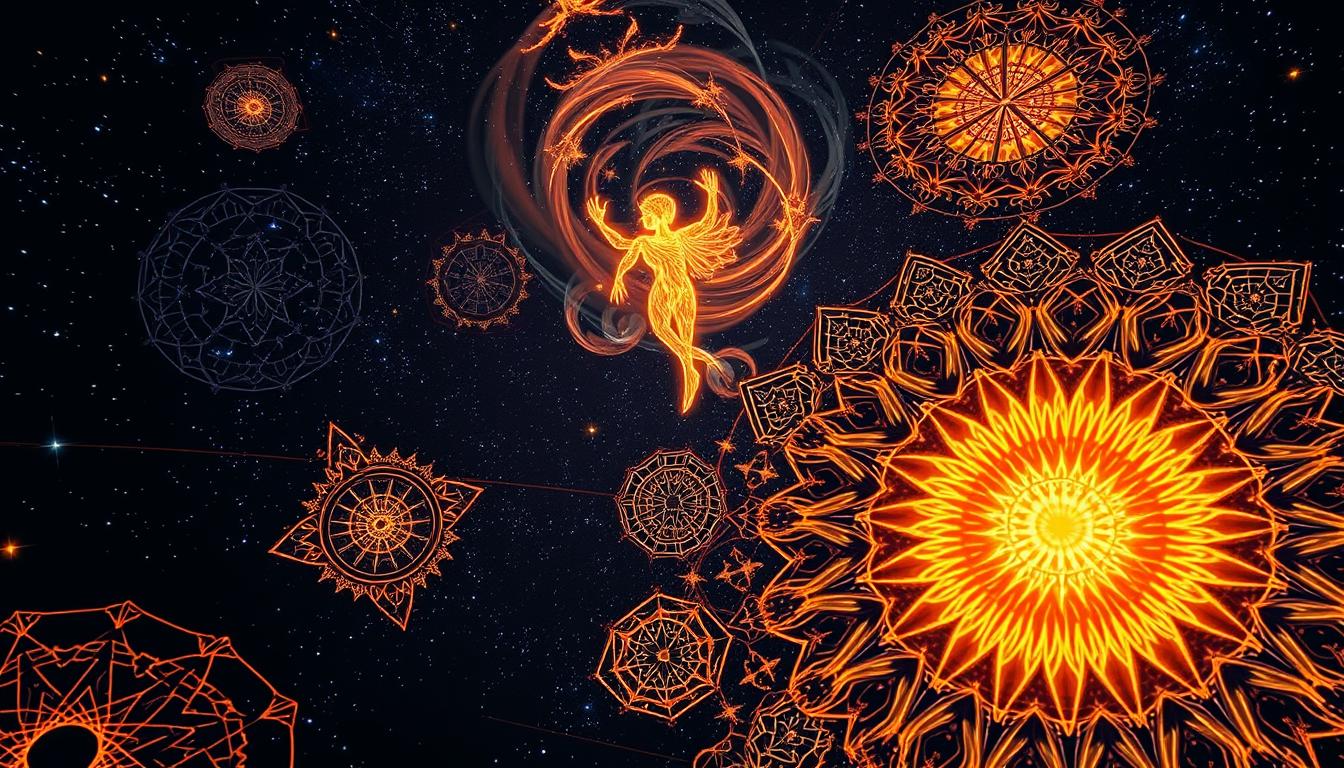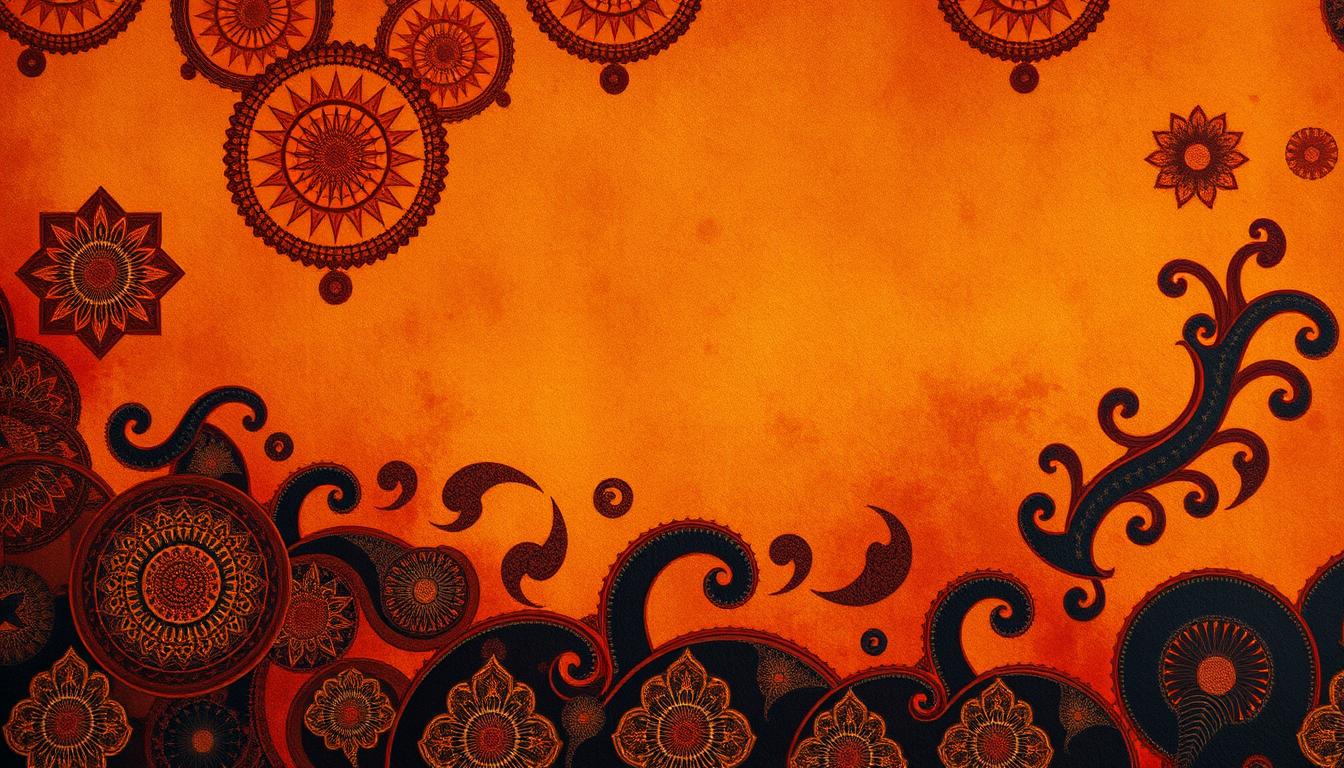Fractal patterns show the cleverness of traditional indigenous architecture. These complex shapes are more than just nice to look at. They hold deep cultural meaning for communities.
Looking into fractal patterns in buildings, especially in Africa, shows us a lot. We see a history full of stories and values in these designs. It’s all about how these patterns make things look better and mean more to society.
The Essence of Fractal Patterns
Fractals are an amazing blend of math, nature, and culture. They show patterns like those in the natural world. Learning about fractals helps us see their role in different cultures and history.
Understanding Fractals and Their Importance
Fractals go beyond just theory in books. They have real uses in biology, architecture, and environment studies. These patterns help us understand nature, from the way trees branch out to coastline shapes.
Historical Context of Fractals
People have known about fractal shapes for a long time, before they were even called fractals. Cultures worldwide have used these patterns in their art and buildings. The real study of fractals began with people like Benoit Mandelbrot. He showed us how important they are in math and culture.

Fractal Patterns in Traditional Indigenous Architecture
Fractal patterns shape both the look and purpose of African indigenous architecture. They use geometric shapes and layouts to strengthen community and culture.
Examples from African Societies
In Africa, you can see fractal patterns in many places. For example, Uganda’s Karamoja district has villages with circular designs and complex paths. This helps bring people together.
Logone-Birni in Cameroon uses repeated shapes that are both useful and culturally important. These designs reflect the people’s way of life and traditions.
Design Themes Evolving from Cultural Practices
African architectural designs are deeply linked to cultural traditions. They show what communities value and how they live. For instance, fractal scaling in village layouts boosts space use and supports social ties. Architecture becomes a way to show cultural identity and promote togetherness.
Cultural Significance of Fractals in Architecture
Fractal patterns in architecture do more than just look nice. They deeply affect community identity and how societies are built. These patterns are a key part of culture. They show the shared beliefs and traditions of indigenous peoples.
Connection to Community and Identity
Fractals help shape who we are as a community. They link us to our cultural past, telling the stories of different groups. By adding these designs to buildings, they help people feel connected. They create a sense of togetherness.
These patterns make spaces that bring people together. They do this with features that encourage mingling and support strong social ties.
Fractals as Reflection of Societal Structures
Fractals also represent how societies work. They show how everything in a community is connected, like in fractal architecture. This reminds us of the importance of working together towards common goals.
They push for architecture that is good for the planet and supports sustainable living. This way, buildings reflect the society’s values and its care for the environment.
Case Studies: Indigenous Architectures Featuring Fractals
Studying indigenous architecture shows us how fractal patterns are a key part of their design. The Great Wall of Benin and Logone-Birni are prime examples. They highlight how geometry and urban design are deeply connected to culture and community.
The Great Wall of Benin
The Great Wall of Benin, over 600 years old, is an important example of fractal architecture. It stretches about 16,000 km and protected the city of Benin. This engineering marvel displays geometric patterns that show the region’s architectural complexity.
The wall’s design also shows the importance of safety and strength to the community.
Logone-Birni and Its Fractal Urban Design
Logone-Birni in Cameroon uses fractal patterns in its urban design. It shows how local communities design their living spaces with repeatable designs. These designs nicely blend social aspects and environmental needs. This gives a fresh view on how people relate to their environment.
Fractal Patterns in Other Forms of Indigenous Art
Indigenous art is diverse, showing off skills that mirror nature’s math. Fractals in textiles and sculpture tell of deep cultural ties. We’ll see how fractals show up beyond buildings, in both fabrics and sculptures.
Textiles and Their Mathematical Beauty
Kente and Adire fabrics showcase fractals, drawing on stories from their cultures. The makers use scale in ways that reflect Western math’s patterns. Their work makes striking visuals that honor their heritage deeply.
- Kente cloth from Ghana shows off bright colors and fractal-based patterns.
- Adire textiles from Nigeria use special dyeing to create fractal-like swirls.
- These designs do more than look good; they share stories and values, showing who the community is.
Fractals in Indigenous Sculpture and Artworks
Indigenous sculpture also embraces fractals, exploring themes like repetition and change. Many sculptures have a geometric style, full of fractal patterns in pottery and carvings. These works help us appreciate the math in indigenous cultures.
- Sculptures often have repeating patterns, showing fractal shapes.
- Pottery pieces show off detailed work that mixes art with math.
- Fractals in these pieces help tell cultural stories visually.
Fractal Geometry in Traditional Practices
Fractal geometry is key in old ways of building. It shows innovative designs that fit well with nature. By using fractal scaling, native buildings show a deep know-how of their environment. Therefore, these buildings not only house people but also support lasting architecture.
Building Techniques Using Fractal Scaling
Using fractal geometry in construction leads to space-saving and useful designs. This includes:
- Shaping buildings to suit local weather.
- Using repeated patterns for better stability and looks.
- Picking local materials to cut costs and help the planet.
This way, buildings stay cozy without too much energy, showing a strong commitment to lasting architecture.
Environmental Advantages of Fractal Architecture
The green benefits of fractal architecture are clear. These structures offer:
- Lower energy use through natural temperature control.
- Less waste and smarter use of resources thanks to efficient design.
- More plant and animal life by keeping natural areas safe when building.
This highlights a big respect for our planet, showing how fractal geometry fits with green building practices.
Modern Applications of Fractals in Architecture
Fractal patterns are getting more popular in today’s architecture. Architects mix old indigenous influences with new designs. They make buildings look better and solve issues like sustainability and energy use. This mix of old wisdom and new technology is exciting.
Contemporary Designs Inspired by Indigenous Patterns
Modern designs use indigenous fractal patterns. These patterns are not only beautiful but also useful. Architects add these designs to match the environment. Fractals help make spaces that are lively, meaningful, and meet today’s needs.
Case Study: Xavier Vilalta’s Fractal Buildings
Xavier Vilalta combines modern architecture with traditional methods in Ethiopia. His buildings use fractal patterns for better air and light. This cuts down energy costs. His work shows how fractal design connects old traditions and new sustainability. It’s a guide for future designs that honor indigenous styles.
The Intersection of Nature and Fractal Design
Nature-infused designs shape traditional architecture deeply. Many buildings are made to fit in with nature, taking cues from nearby shapes and patterns. This not only looks beautiful but also holds deep cultural ties, rooting these designs in their natural environments.
Natural Inspirations in Traditional Architecture
Many indigenous structures reflect nature in their design. For example, roofs may follow the curve of hills, incorporating natural elements into their foundations. This blend of architecture and nature stresses the importance of sustainability and ties to the community.
Fractals in Landscape Architecture
Landscape architecture is now using fractal principles more often. This is to make designs that go well with natural settings. By applying fractal patterns, these designs do more than just work well – they echo nature’s own intricate patterns. They help support various species and keep the environment balanced, which is key in solving today’s environmental problems.
Fractal Patterns and Sustainability
Fractal architecture combines sustainability with design. Architects use fractals to create buildings that connect people with nature. This method is good for the environment and solves city problems.
Benefits of Biophilic Design
Biophilic design makes life better by adding nature to buildings. It helps people think clearly and feel less stressed. It also boosts work creativity and promotes meeting others in green spots.
- Improved mental clarity and reduced stress levels.
- Increased productivity and creativity in work environments.
- Promotion of social interaction through communal green spaces.
Reducing Environmental Footprint through Fractal Architecture
Fractal architecture lessens environmental impact. It uses eco-friendly materials and smart designs that save resources. Important features include:
- Utilizing natural ventilation and daylighting strategies.
- Implementing energy-efficient systems that lower operational costs.
- Enhancing local biodiversity by integrating green roofs and walls.
Education and Engagement with Fractal Design
Understanding fractal geometry boosts education. It’s especially true for STEM programs, which link math concepts to real-life examples. Students learn about math theory and discover how it’s used in things like traditional buildings.
STEM Engagement through Fractal Geometry
STEM programs give kids a close look at mathematical ideas behind old-school designs. This helps students see how cool and complex fractals are, showing up in both nature and things we make. Teachers have students create fractals, improving their thinking and understanding.
Workshops and Community Learning on Indigenous Patterns
Workshops on native designs are key for community involvement. They help people dive into fractal geometry’s role in traditional architecture. By working together, community members can share thoughts. They help shape design ideas that tell stories about their culture.
Conclusion
Looking into fractal patterns in indigenous architecture shows us how deep culture is built into buildings. These patterns tell stories about who people are, what they value, and how their societies are organized. It shows us how connected we are to each other and to our surroundings.
Thinking about the future, it’s clear that learning from indigenous architecture can help modern architects. They can design spaces that are new yet honor cultural traditions. This makes our buildings better and helps people feel like they belong in today’s world.
Talking about fractal patterns in buildings helps us connect the past to the future. Mixing old wisdom with new ideas can change how we build things. This way, we respect culture while also caring for our planet and community. It keeps the spirit of indigenous architecture alive for future generations.



